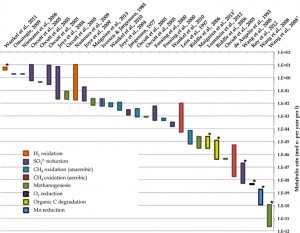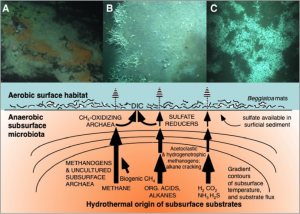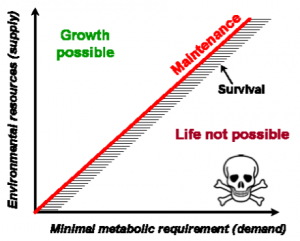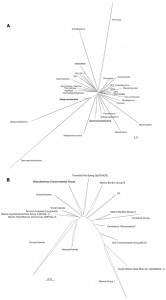In the initial phase of C-DEBI, the following four themes were the focus of C-DEBI research, providing a conceptual framework for scientific investigation supported by C-DEBI across a broad scientific community: Activity, Extent of Life, Limits to Life, and Evolution and Survival. For each of these themes, Theme Team Leaders regularly brought together experts within and outside of C-DEBI to identify new research directions within each theme. Based on these “think tank” conversations, the Theme Team Leaders developed Requests for Proposals for the initial phase of C-DEBI small grants and fellowship programs.
Research Theme I. Activity in the Deep Subseafloor Biosphere: function & rates of global biogeochemical processes
Theme Team Leaders: Wiebke Ziebis (USC, 2010) & Beth Orcutt (Bigelow, 2012-2014)
What is the global consequence of microbial activity in the marine deep sediment and crustal biospheres? How quickly, or slowly, do processes occur, and what factors regulate these rates? What types of microbial processes are dominant in different environments, and why? What are cell specific rates of activity in the marine deep biosphere? Through targeted support of research aiming to quantify geographic distributions of subseafloor sedimentary respiration, rates and magnitude of microbial crustal alteration, energy sources and carbon flow, C-DEBI enables robust analyses linking subseafloor processes to global scales and biogeochemical cycles.
Download the 2013 Activity Theme Team Workshop Report
Read the 2013 Activity Theme Review [Orcutt et al.] in Frontiers in Microbiology
Read the 2012 Activity Theme Team Workshop Report
Research Theme II. Extent of Life: biomes and the degree of connectivity (biogeography and dispersal)
Theme Team Leader: Andreas Teske (UNC, 2010-2014)
Numerous studies by C-DEBI participants and others continue to show that microbial life is widespread in the subseafloor. At the same time, however, life is not everywhere, and where it does occur it appears to operate at very slow metabolic rates. How do environmental variables such as temperature, pressure, nutrient availability, fluid flow, pore space, etc. limit the distribution and metabolism of microorganisms in the deep subsurface? What defines the boundary where life can no longer exist in the deep subsurface? C-DEBI promotes investigations into the factors that limit the extent and activity of life in the deep subseafloor, including field, laboratory, and theoretical studies.
Download the 2014 Limits To Life Theme Team Workshop Report
Download the 2011 Limits To Life Theme Team Workshop Report
Research Theme IV. Evolution and Survival: adaptation, enrichment, and repair
Theme Team Leaders: Bill Nelson (USC, 2010-2013) & Julie Huber (2013-2014)





